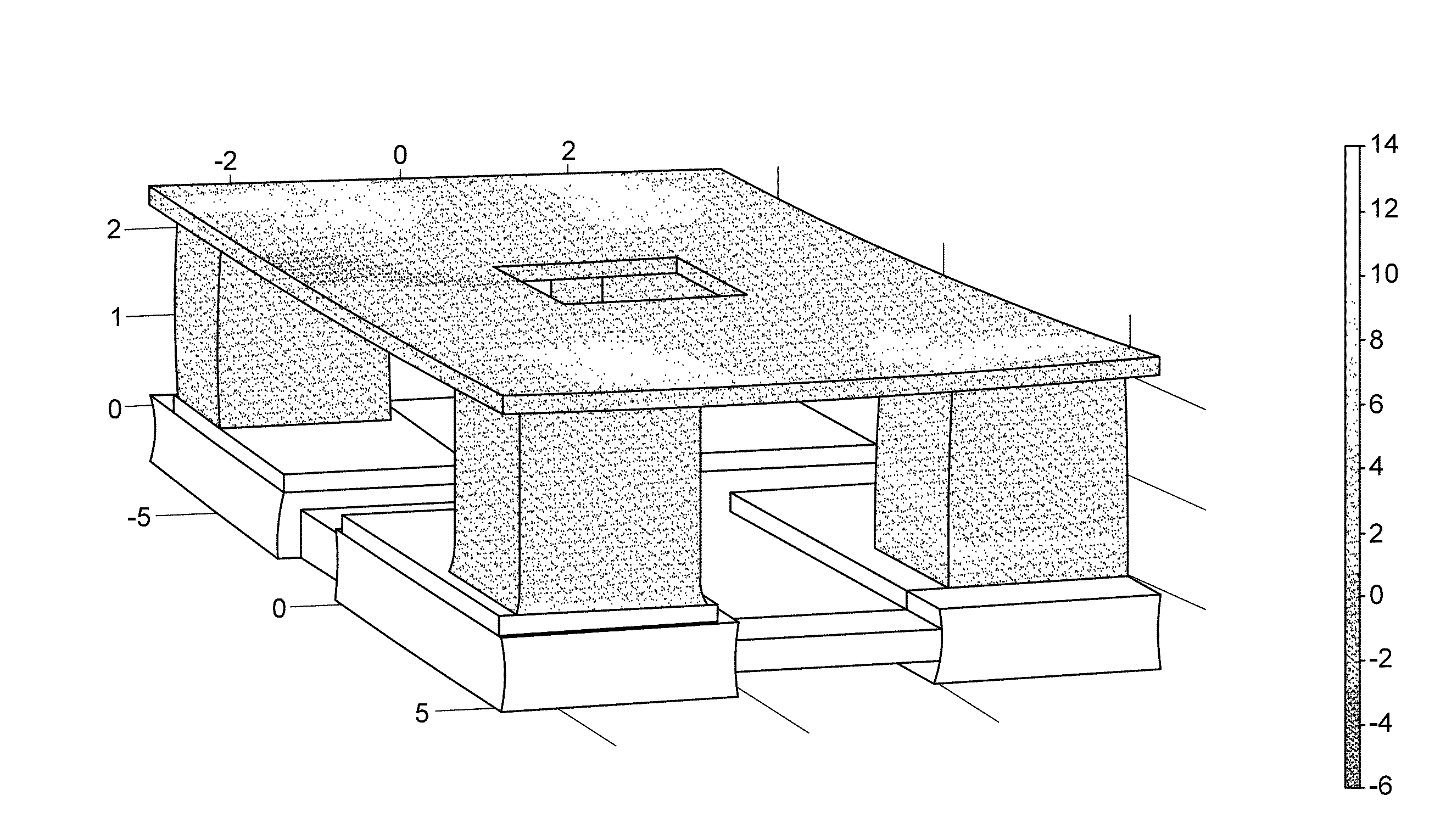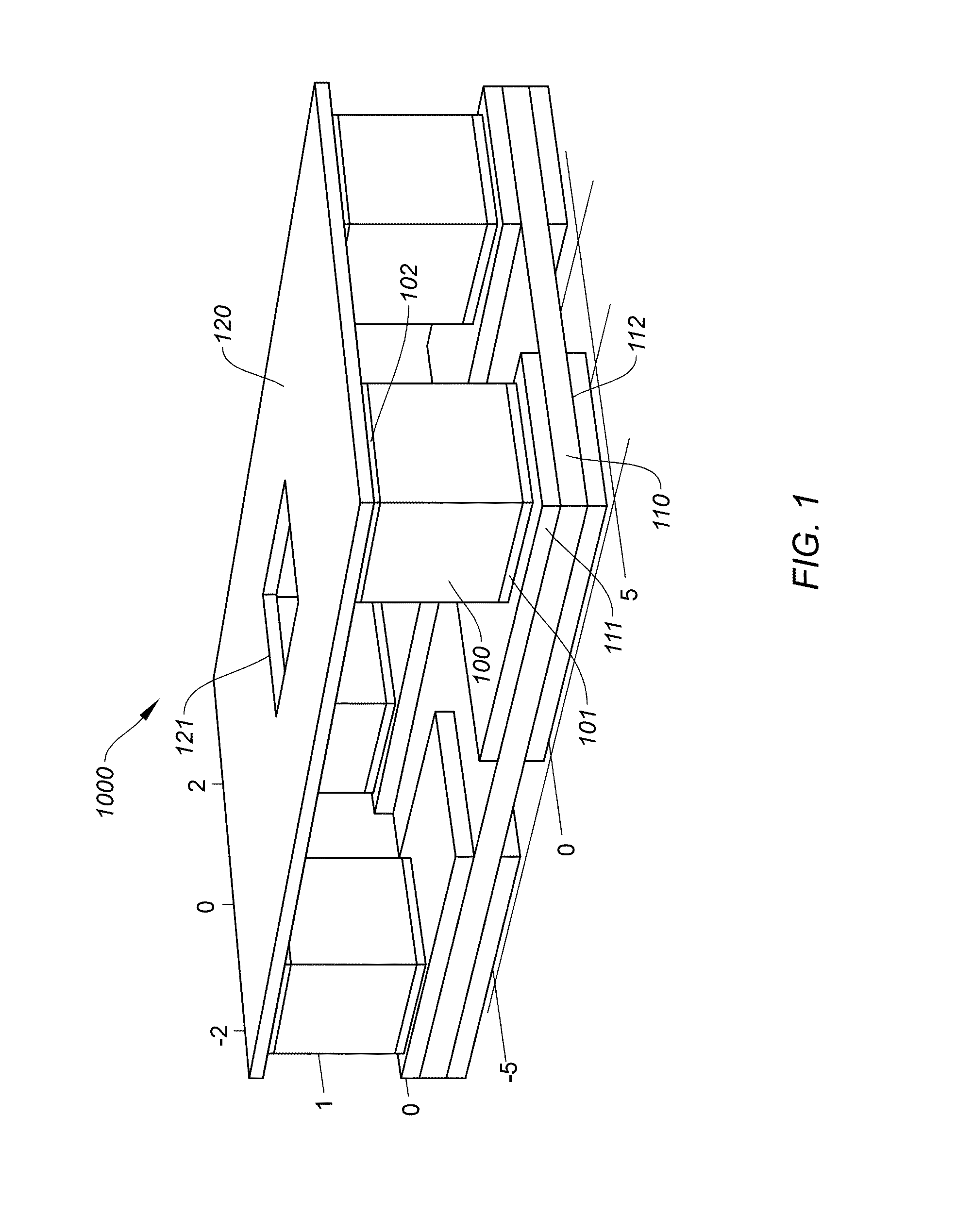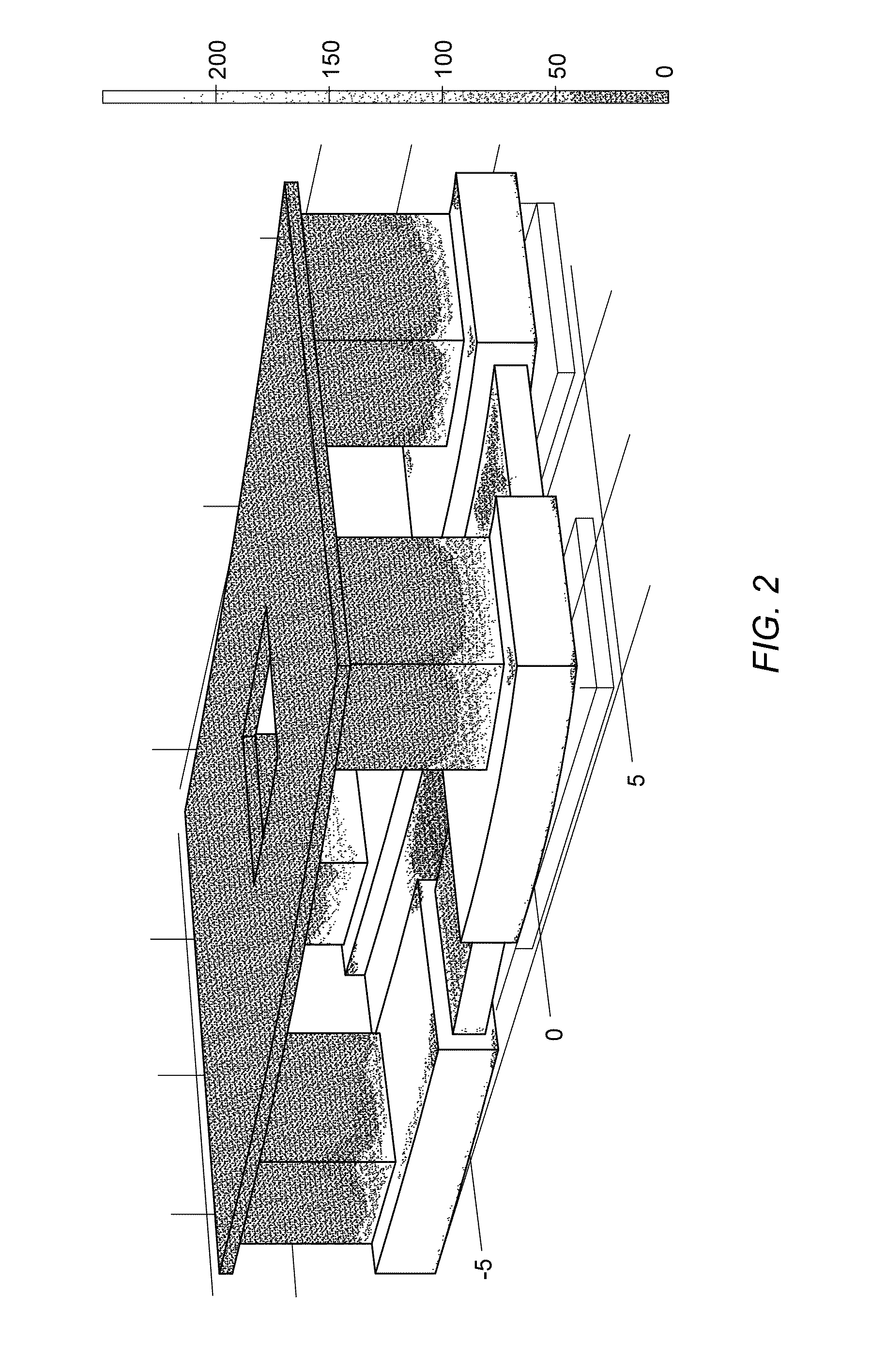Thermoelectric devices having reduced thermal stress and contact resistance, and methods of forming and using the same
a technology of contact resistance and thermoelectric devices, which is applied in the direction of thermoelectric device junction materials, thermoelectric device manufacture/treatment, electrical apparatus, etc., can solve the problems of thermal stress, film delamination, cracking of whole pieces of thermoelectric materials, etc., and achieves reduced thermal stress and contact resistance , the effect of simplifying the process steps
- Summary
- Abstract
- Description
- Claims
- Application Information
AI Technical Summary
Benefits of technology
Problems solved by technology
Method used
Image
Examples
Embodiment Construction
[0026]The present invention is directed to structure and method of thermoelectric device package according to certain embodiments. More particularly, some embodiments of the invention provides structure and method for reducing thermal stresses in thermoelectric legs during manufacturing of a thermoelectric device. Merely by way of example, it has been applied for using CTE (coefficient of thermal expansion) matching ductile materials at the interface between thermoelectric materials and shunts on ceramic base plate. It would be recognized that the invention has a much broader range of applicability.
[0027]Additionally, the present invention is directed to thermoelectric composite structures and methods of making the same according to some embodiments. More particularly, certain embodiments of the invention provide a bulk thermoelectric composite material capped with two metal layers forming a structure for the manufacture and assembly of thermoelectric elements for large-scale thermo...
PUM
 Login to View More
Login to View More Abstract
Description
Claims
Application Information
 Login to View More
Login to View More - R&D
- Intellectual Property
- Life Sciences
- Materials
- Tech Scout
- Unparalleled Data Quality
- Higher Quality Content
- 60% Fewer Hallucinations
Browse by: Latest US Patents, China's latest patents, Technical Efficacy Thesaurus, Application Domain, Technology Topic, Popular Technical Reports.
© 2025 PatSnap. All rights reserved.Legal|Privacy policy|Modern Slavery Act Transparency Statement|Sitemap|About US| Contact US: help@patsnap.com



